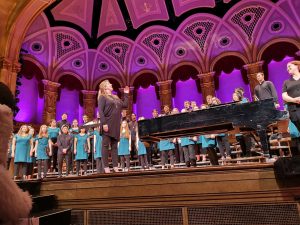Being a fan of the Vancouver Symphony Orchestra for many years, I just needed to watch one of their performances during the final exam period as my way to relax and destress. Out of the options such as the legendary Mozart and Beethoven, I chose one with the concept that I was not as familiar with – the Russian composers who dealt with political minefields of Russia and the Soviet Union in different ways: Stravinsky, Prokofiev & Shostakovich.
During class, I had heard a brief introduction about Stravinsky and his ballet “The Rite of Spring”; but I had no prior knowledge for Prokofiev and Shostakovich. Therefore, I went in with an open mind, hoping to get a sense of Russian classical music at the end of the concert.
The concert started with a short introduction given by the Music Director of VSO, Otto Tausk, on a brief explanation of the pieces. The first piece is the Funeral Song by Stravinsky. Stravinsky left Russia before the Russian Revolution, and in fact, he could not return until very late of his life. The ‘Funeral Song’ was recently discovered, since it was lost during the Russian Revolution. The song started with a depressed mood – with the strings on very low notes, following by wind instruments intensifying the suspense. The strings had two sections in the song – one with longer notes playing very sorrowful and heartbreaking melodies; the other section were playing fast sextuplets, for which I felt that there was something underlying that wanted to rush and breakthrough. The minor key made this song very dark and gloomy, and the song reminded me of one of the dark Harry Potter soundtracks.
The second piece of work was Violin Concerto No.2 in G minor by Prokofiev, featuring Rosanne Philippens on solo violin. In comparison with the Stravinsky piece and especially with the next Shostakovich piece, the orchestra size for this one is relevantly smaller – there was a maximum of two identical instruments playing for each kind of wind and brass instrument. There were three movements in total, with the first and the third being Allegro and the second being Andante. The most impressive part was the solo violin. Rosanne was playing with enthusiasm and fierce, playing beautifully on the long solo where there were many notes with rapid jumps.
The final piece was a majestic one: Lady Macbeth of Mtsensk: Suite Arr. James Conlon by Shostakovich. This opera was banned in the Soviet Union for censorship for many years. To end the concert, this piece involved with a full orchestra – with five percussionists. The original work was the opera written by Shostakovich, based on the story of Lady Macbeth: a woman who falls in love with one of her husband’s workers and commits a murder. Thus, it sounded very serious and dramatic, and just like opera seria, an unresolved conflict was being painted quite clearly. When Mr. Otto Tausk extended his arms fully to cue for the full orchestra to play the climax on forte, I had goosebumps all over me. There were so much solemnity and majesty in this piece of work.
After all, the concert was fantastic – it was very worth receiving a standing ovation from the audience. After listening to this concert, I just can’t wait to go to the next one.

